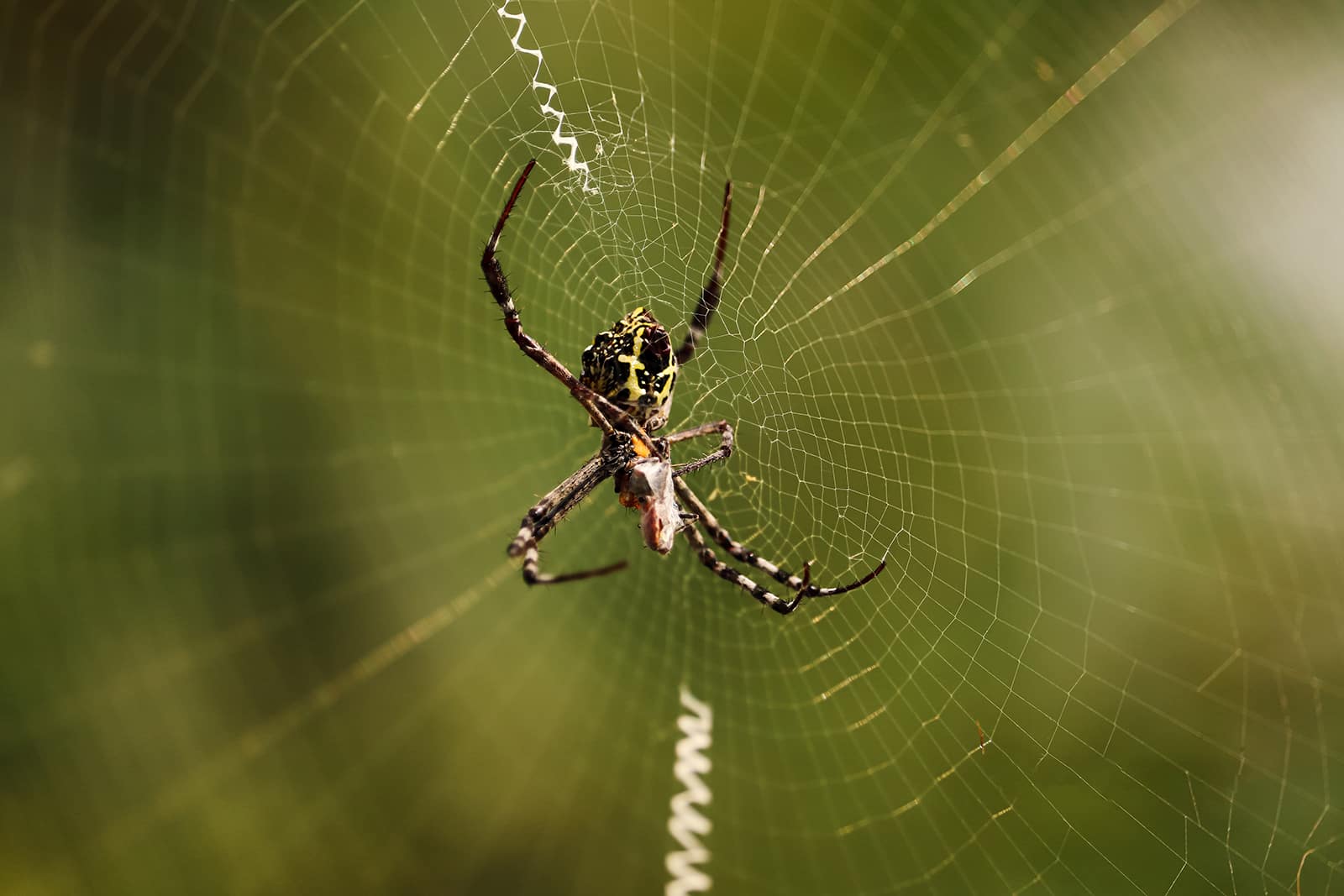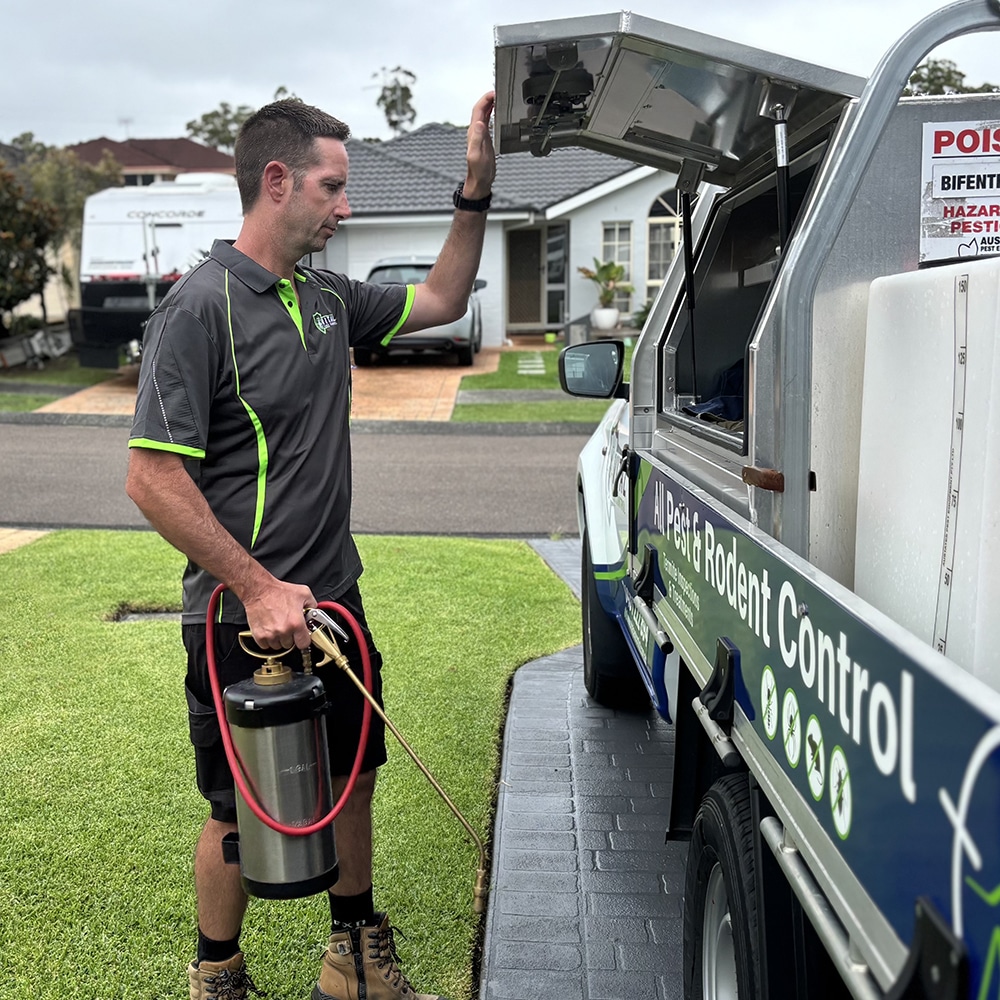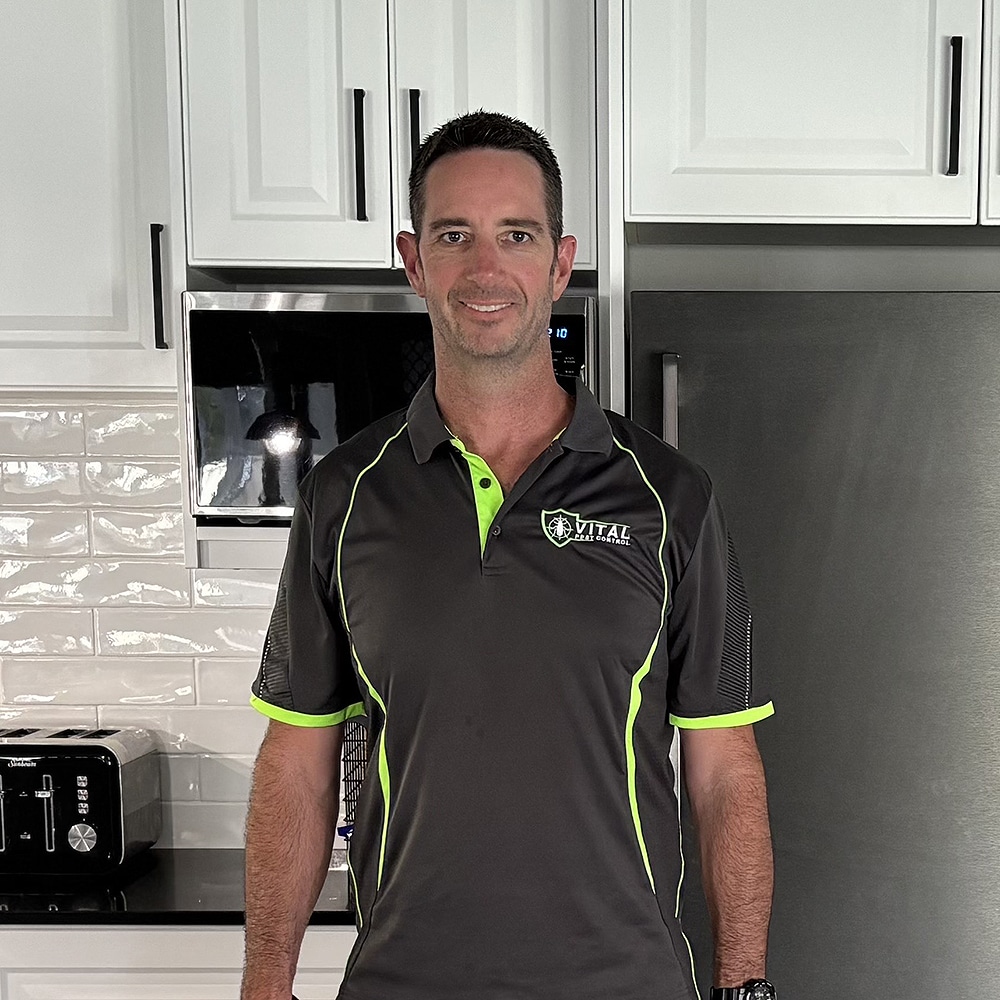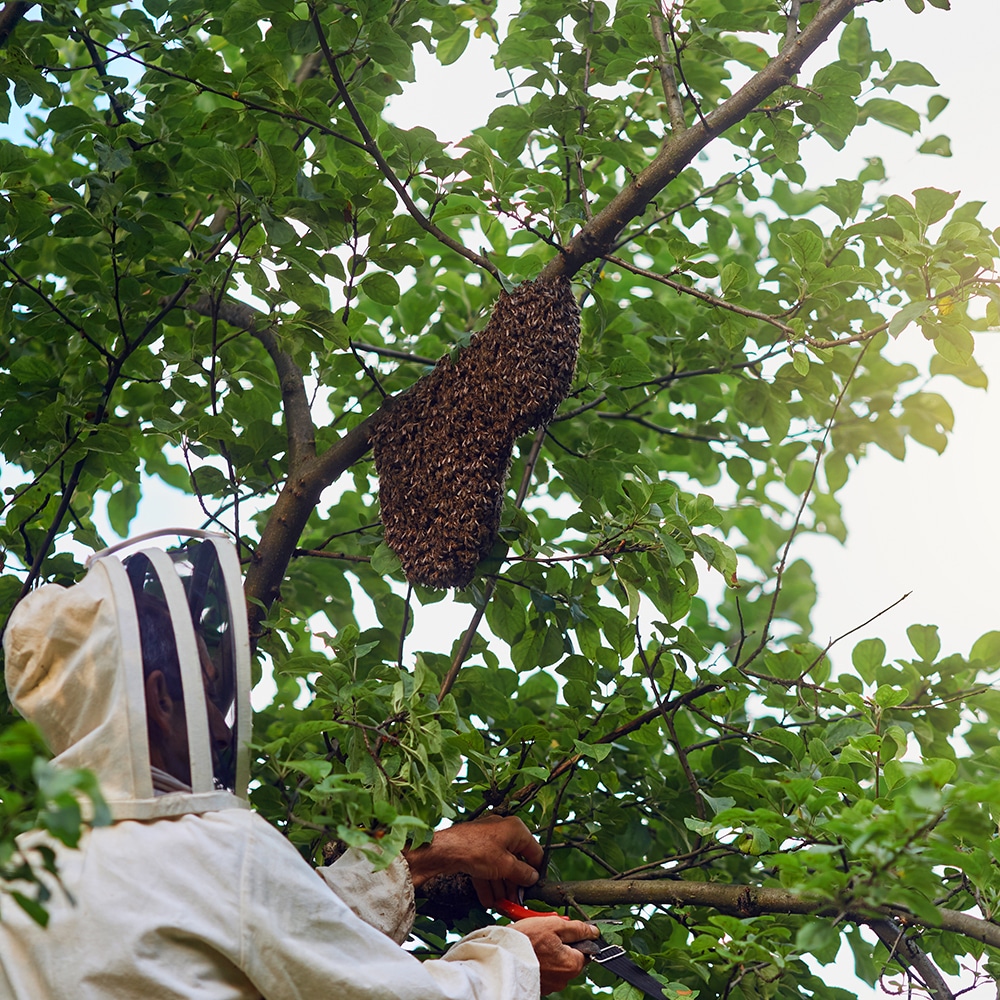
Why Do Spiders Come Back And Why
Why Do Spiders Come Back And Why On The Central Coast NSW. Responsive Proactive Solutions. Detail-focused for lasting results. Call Adam on 0431 222 894
An introduction to Integrated Pest Management (IPM) is crucial for effective pest control strategies. At Vital Pest Control, we offer reliable and trustworthy solutions tailored for the Central Coast NSW.
IPM Core Principles
IPM focuses on long-term prevention of pests through a combination of techniques. These methods are safer for you and the environment. By integrating multiple approaches, you ensure effective pest control without relying heavily on chemicals.
Monitoring and Identification
Regular monitoring is essential. Identifying pest types helps in choosing the right control methods. Vital Pest Control employs fast and responsive monitoring techniques for timely interventions.
Action Thresholds for Pests
Determine the point at which pest populations become unacceptable. Action thresholds guide when to act, balancing between prevention and control. This approach ensures quality over quantity in pest management.
Combining Cultural and Biological Controls
Using cultural methods like crop rotation reduces pest habitats. Biological controls introduce natural predators to manage pest populations. This combination minimises chemical use while ensuring effective results.
Exclusion and Sanitation Measures
Prevent pests by improving sanitation and using exclusion techniques. Seal entry points and maintain cleanliness to deter pests. These practical measures are easy to implement and offer long-term solutions.
Minimal Pesticide Use Approach
IPM advocates for minimal pesticide use. Only when necessary, apply targeted treatments. This approach protects beneficial organisms and reduces environmental impact.
Evaluating Pest Populations
Regularly evaluate pest levels to adjust management strategies. This ongoing assessment helps maintain control and prevent infestations. It’s a proactive step in effective pest management.
Recording Results Diligently
Keep detailed records of pest activity and management actions. Documentation supports informed decisions and improves future strategies. It’s a vital component of successful pest control.
Discover how we can help you today! Visit our Contact page for more information.

Integrated Pest Management (IPM) is a holistic approach used by Vital Pest Control in Central Coast NSW to manage pests effectively while minimising risks to people and the environment. By focusing on sustainable and environmentally friendly practices, IPM aims to find a balance between pest control and the health of the ecosystem.
Monitoring and Identification
Vital Pest Control prioritises monitoring and identifying pest species before deciding on control measures. Regular inspections and use of traps help in understanding pest behaviour and population levels. Accurate identification ensures that the most effective treatment methods are chosen, limiting unnecessary interventions.
Preventive Measures
Prevention forms the backbone of IPM. This involves modifying habitats to make them less conducive to pest infestations. Simple actions like sealing entry points and managing waste effectively can significantly reduce pest problems. Early intervention prevents pests from becoming a larger issue.
Control Methods
When intervention is necessary, Vital Pest Control employs a variety of control methods, including biological controls, physical removal, and selective use of pesticides. The focus remains on using the least harmful approach first, escalating only as needed to reduce environmental impact.
Evaluation and Adjustment
Regular evaluation of pest control measures is crucial. By assessing the effectiveness of strategies used, Vital Pest Control can adjust their plans to ensure optimal results. This adaptive approach ensures that pest control remains effective and environmentally responsible over time.
The Central Coast NSW is a thriving area with a diverse ecosystem. This makes monitoring and identifying pests crucial for effective pest management. Integrated Pest Management (IPM) focuses on sustainable strategies, and understanding local pest behaviour is key to success.
Understanding Pest Patterns
Pest patterns vary throughout the year. Seasonal changes can affect pest populations, making it essential to monitor these shifts. By recognising patterns, pest control efforts become more targeted. Regular inspections help in predicting infestations before they become serious. This proactive approach minimises damage and reduces the need for chemical interventions.
Tools and Techniques
Various tools aid in pest monitoring. Traps, sensors, and visual inspections are commonly used on the Central Coast. Each tool has unique benefits, helping identify specific pests like termites or rodents. Combining these techniques provides a comprehensive understanding of pest activity. This data-driven approach ensures precise control measures are implemented.
Local Expertise and Knowledge
Local knowledge is invaluable in pest control on the Central Coast. Professionals familiar with the area can quickly identify pest species and their habits. This expertise allows for tailored strategies that address specific challenges in the region. Engaging with local pest control experts ensures effective, sustainable solutions are applied.
Integrated Pest Management (IPM) is a holistic approach to managing pests by combining various methods. Action thresholds are vital in IPM, helping decide when to act against pests. For Vital Pest Control on the Central Coast NSW, understanding these thresholds ensures effective pest control without unnecessary interventions.
Defining Action Thresholds
Action thresholds are the pest population levels that trigger control measures. They vary by pest type, location, and season. Vital Pest Control uses these thresholds to balance pest management and environmental impact. By establishing specific limits, they can act only when infestation levels pose significant risks to property or health.
Factors Influencing Thresholds
Several factors influence action thresholds, including economic impact, pest behaviour, and environmental conditions. Some pests may require immediate action due to rapid reproduction, while others pose less immediate threats. Vital Pest Control assesses these factors to tailor solutions for the Central Coast’s unique environment.
Benefits of Using Action Thresholds
Using action thresholds reduces unnecessary pesticide use, safeguarding the environment. It ensures interventions are timely and effective, preventing damage before it escalates. For Vital Pest Control, this approach not only protects client properties but also promotes sustainable pest management practices.
Integrated Pest Management (IPM) is key in maintaining agricultural health and biodiversity on the Central Coast of NSW. By blending cultural and biological controls, farmers can effectively manage pests while promoting ecological balance. This approach not only safeguards crops but also enriches the local environment, fostering sustainable practices.
Cultural Controls: Shaping the Environment
Cultural controls involve altering farming practices to make the environment less conducive to pests. On the Central Coast, rotating crops, adjusting planting times, and using pest-resistant varieties can significantly reduce pest populations. These methods help maintain soil health and biodiversity, creating a robust ecosystem that naturally deters pests. By disrupting pest life cycles and habitats, farmers can effectively manage pest pressures without relying heavily on chemical interventions.
Biological Controls: Harnessing Nature
Biological controls utilise natural predators and beneficial organisms to keep pest populations in check. On the Central Coast, introducing native predators like ladybirds and parasitic wasps can control pest outbreaks efficiently. These biological agents thrive in the local ecosystem, offering a sustainable and environmentally-friendly pest management solution. By encouraging a balance between pests and their natural enemies, farmers can reduce the need for chemical pesticides, protecting both crops and the surrounding environment.
Exclusion and sanitation measures are crucial components of Integrated Pest Management (IPM) for effective pest control on the Central Coast of NSW. By implementing these strategies, residents can prevent infestations and reduce reliance on chemical treatments. Understanding these measures helps in maintaining a pest-free environment while also promoting sustainability.
Exclusion Techniques
Exclusion involves creating barriers to stop pests from entering homes or businesses. Sealing cracks and gaps in walls, doors, and windows can keep insects and rodents at bay. Installing door sweeps and window screens also prevents entry, making it harder for pests to invade. Regular maintenance ensures these barriers remain intact, offering ongoing protection.
Sanitation Practices
Proper sanitation is key to removing potential food sources and habitats for pests. Keeping areas clean and free of clutter reduces the chances of attracting pests. Regularly disposing of rubbish and storing food in airtight containers are effective sanitation practices. Ensuring that drains and sinks are free from debris also helps in maintaining a pest-free environment.
Benefits of Combining Measures
Integrating exclusion and sanitation measures creates a robust pest management strategy. These methods not only prevent infestations but also minimise the need for chemical interventions. By focusing on prevention, property owners can enjoy long-term solutions and maintain a healthier living environment. Implementing these measures supports sustainable pest control on the Central Coast.
The Central Coast of NSW is renowned for its natural beauty, but residents often face challenges with pests. A minimal pesticide use approach offers an effective solution for managing pests while safeguarding the environment. This method aligns with the principles of Integrated Pest Management, focusing on long-term prevention and control through ecological means.
Understanding the Minimal Pesticide Approach
This strategy prioritises non-chemical methods first, relying on pesticides only as a last resort. It’s about understanding pest life cycles and habitats to implement preventative measures. By using cultural, mechanical, and biological controls, the need for chemical intervention is reduced significantly, preserving the local ecosystem.
Benefits for the Central Coast
Adopting minimal pesticide use on the Central Coast benefits both the environment and community health. It reduces chemical runoff into waterways, protecting aquatic life and maintaining biodiversity. Homeowners and businesses also enjoy healthier surroundings, with reduced exposure to harmful chemicals, fostering a safer living and working environment.
Practical Implementation
Implementing this approach involves regular monitoring and accurate identification of pests. By focusing on targeted actions like habitat alteration and the introduction of natural predators, pest populations can be controlled effectively. Engaging with local pest control experts who are familiar with the region’s unique challenges can enhance the effectiveness of these strategies.
The Central Coast of NSW is known for its beautiful landscapes and diverse wildlife. However, this also means a variety of pests can thrive in the region. Evaluating pest populations is crucial for effective pest control. This process helps in implementing Integrated Pest Management (IPM), ensuring your home or business remains safe from unwanted guests.
Understanding Pest Habitats
To manage pests effectively, it is vital to understand their habitats. Pests like ants, cockroaches, and spiders tend to seek shelter in warm, humid spaces. Identifying these nesting sites is the first step in controlling their populations. Regular inspections help in pinpointing these areas, allowing for targeted treatments.
Monitoring Pest Activity
Monitoring helps track pest activity and population changes over time. Tools such as traps and visual inspections can provide valuable data. These insights guide the timing and type of pest control measures needed, reducing the chances of an infestation taking hold.
Assessing Environmental Impact
Evaluating pest populations also involves considering the environmental impact of control methods. IPM prioritises eco-friendly solutions. By assessing the pest threat level, you can choose treatments that minimise harm to the surrounding ecosystem while effectively managing the pest issue.
In the heart of the Central Coast NSW, effective pest control hinges on meticulous record-keeping. Vital Pest Control ensures that every pest management step is documented, supporting a robust Integrated Pest Management (IPM) approach. Accurate records are a cornerstone for identifying trends, adjusting strategies, and ensuring regulatory compliance.
Tracking Pest Activity
Keeping a keen eye on pest activity is crucial. By documenting sightings, droppings, and damage, Vital Pest Control can pinpoint infestation patterns. This data helps tailor pest control methods to specific needs, enhancing efficiency and effectiveness. Consistent tracking also aids in predicting potential outbreaks, allowing for preemptive actions.
Monitoring Treatment Effectiveness
Recording treatment outcomes is vital for assessing their success. By noting which methods yield results, Vital Pest Control can refine tactics for better outcomes. This process involves evaluating both the short-term and long-term impacts of treatments, ensuring sustainable pest management solutions.
Ensuring Compliance and Safety
Diligent record-keeping supports compliance with local regulations. Detailed logs of chemicals used and safety measures taken are essential. Vital Pest Control prioritises safety, ensuring residents and the environment are protected. Comprehensive records also provide transparency, fostering trust with clients who can see a clear history of pest management actions.
Balancing economic growth with ecological sustainability is crucial for effective pest control on the Central Coast of NSW. This region’s unique environment requires strategies that protect both the local economy and its natural ecosystem. Vital Pest Control plays a pivotal role in ensuring this balance through integrated pest management techniques.
Economic Considerations
Economic factors often drive pest control decisions. The agricultural sector on the Central Coast heavily relies on crops free from pest damage. Effective pest management can boost productivity, leading to increased profits for farmers and businesses. Vital Pest Control implements cost-effective solutions that minimise crop loss, ensuring that industries remain profitable while keeping pest populations in check. This approach helps sustain local economies by providing reliable pest management that does not break the bank.
Ecological Impact
Ecological balance is equally important in pest control strategies. The Central Coast houses diverse flora and fauna, requiring methods that protect these natural assets. Vital Pest Control uses environmentally friendly practices that reduce chemical usage, preserving the area’s biodiversity. By focusing on ecological impacts, they help maintain the natural beauty and health of the ecosystem. This ensures that pest management efforts do not harm the delicate balance of local wildlife and plant life.
Vital Pest Control’s integrated approach manages to harmonise economic needs with ecological protection, ensuring sustainable pest control solutions for the Central Coast. Balancing these aspects fosters a healthier environment, supporting both the community and its natural surroundings.
Implementing Integrated Pest Management (IPM) is crucial for controlling pests sustainably on the Central Coast NSW. A significant aspect of IPM is reducing secondary pest outbreaks, which can occur when natural predators are disrupted. By understanding the dynamics of pest populations and their natural enemies, Vital Pest Control can help maintain ecological balance and minimise chemical use.
Understanding Secondary Pests
Secondary pests emerge when primary pest control measures disrupt the ecosystem, allowing other pests to thrive. For instance, eliminating a primary pest might inadvertently remove its predators, letting secondary pests flourish. This imbalance can lead to more significant pest problems, necessitating further intervention.
Promoting Natural Predators
To curb secondary pest outbreaks, fostering natural predators is essential. Encouraging beneficial insects like ladybirds and lacewings helps keep pest populations in check. Creating habitats that support these predators can reduce reliance on chemical solutions and promote a healthy environment.
Selective Pest Control
Employing selective pest control methods minimises harm to non-target species. Using targeted treatments, such as pheromone traps or biological agents, ensures that beneficial organisms remain unharmed. This approach not only controls the primary pest but also preserves the ecosystem.
Continuous Monitoring
Regular monitoring allows for early detection of pest population changes. By keeping a close eye on pest dynamics, Vital Pest Control can adjust strategies promptly to prevent secondary outbreaks. This proactive approach ensures sustainable pest management.
Effective communication with stakeholders is crucial for the success of Vital Pest Control on the Central Coast of NSW. Integrated Pest Management (IPM) relies heavily on collaboration with all parties involved. Engaging stakeholders helps build trust, ensures transparency, and fosters long-term partnerships. Through clear communication, pest control objectives are met more efficiently, benefiting both the company and its clients.
Understanding Stakeholder Needs
To communicate effectively, it’s vital to understand the unique needs and concerns of each stakeholder. Customers, local businesses, and environmental groups may have differing priorities. Listening actively and addressing these priorities helps tailor pest control solutions. This approach not only satisfies stakeholders but also enhances the reputation of Vital Pest Control. Being responsive to these needs ensures stakeholders feel valued and heard.
Regular Updates
Keeping stakeholders informed with regular updates is key. Providing timely information about pest control measures, progress, and results builds confidence. Newsletters, emails, or community meetings can serve as platforms for these updates. Regular communication prevents misunderstandings and showcases the proactive approach of Vital Pest Control. Stakeholders appreciate transparency, which fosters a stronger relationship over time.
Feedback and Collaboration
Encouraging feedback from stakeholders is essential. It offers valuable insights into the effectiveness of pest management strategies. By fostering collaboration, Vital Pest Control can adapt and improve practices. Stakeholder feedback helps identify areas of improvement, leading to more sustainable and effective pest control solutions. Collaborative efforts ensure that pest management meets the evolving needs of the Central Coast community.
Continuous improvement plans are crucial for ensuring Vital Pest Control on the Central Coast NSW stays ahead in the fight against pests. By focusing on continuous improvement, businesses can refine their strategies and enhance their pest management practices, creating safer environments for their clients.
Assessing Current Practices
Vital Pest Control begins by thoroughly assessing their existing pest management practices. This involves evaluating the effectiveness of current methods and identifying areas for improvement. By understanding what works and what doesn’t, the team can make informed decisions to enhance their services.
Incorporating New Technologies
Keeping up with the latest pest control technologies is another vital component. Advanced tools and techniques can significantly improve the efficiency and effectiveness of pest management. By incorporating these innovations, Vital Pest Control ensures they provide top-tier services to their clients on the Central Coast.
Training and Development
Ongoing training is essential for maintaining high standards. Vital Pest Control invests in continuous education for its staff, ensuring they are well-versed in the latest pest management strategies. This commitment to learning helps the team stay ahead of industry trends and deliver exceptional results.
Client Feedback and Adaptation
Listening to client feedback is an integral part of continuous improvement. By actively seeking input from clients, Vital Pest Control can adapt their services to better meet client needs. This responsive approach fosters strong relationships and ensures client satisfaction.
Training staff or family for vital pest control on the Central Coast NSW is essential for effective Integrated Pest Management. By empowering those involved with the right skills and knowledge, pest issues are addressed more efficiently. Understanding the local environment and pest behaviours is key to maintaining a pest-free home or business.
Understanding Local Pest Challenges
Central Coast NSW faces unique pest challenges due to its climate and geography. Training should focus on recognising common local pests such as termites, ants, and rodents. Understanding these pests’ habits and breeding cycles helps in developing targeted control strategies. It’s crucial for everyone involved to be aware of seasonal changes that may influence pest activity.
Implementing Safe and Effective Techniques
Training should include safe use of pest control methods. This involves selecting appropriate products and applying them correctly to minimise risks to health and the environment. Learning about non-chemical methods, such as traps and natural predators, can offer safer alternatives. Proper technique ensures results while safeguarding family and staff.
Monitoring and Continuous Improvement
Regular monitoring of pest activity allows for early detection and prompt action. Trainees should be equipped with skills to identify signs of infestation and document findings. Encouraging a culture of continuous learning and adaptation ensures pest control measures remain effective. Feedback loops and regular updates on new pest control methods keep everyone informed and prepared.
Integrated Pest Management (IPM) is a sustainable approach to pest control that combines various management strategies. Adapting IPM to the unique environment of the Central Coast NSW ensures effective pest control while preserving local biodiversity. By tailoring IPM methods to local conditions, Vital Pest Control can manage pests responsibly and efficiently.
Understanding Local Pest Species
The Central Coast harbours a variety of pests, from termites to cockroaches. Identifying these species accurately is crucial for effective IPM. Local knowledge allows for targeted strategies, reducing reliance on broad-spectrum pesticides. By understanding the specific behaviours and life cycles of these pests, management plans can be more precise and environmentally friendly.
Climate Considerations
The Central Coast’s temperate climate influences pest activity. Warmer months often see increased pest populations. Adapting IPM involves monitoring weather patterns to anticipate pest surges. Implementing preventative measures during these periods can mitigate pest infestations, ensuring control methods are timely and effective.
Utilising Native Predators
Encouraging native predators is a cornerstone of IPM on the Central Coast. Birds, bats, and beneficial insects naturally control pest populations. By fostering these predator species, Vital Pest Control can reduce the need for chemical interventions. This approach supports the local ecosystem while providing sustainable pest management solutions.
Setting clear objectives is crucial for effective Integrated Pest Management (IPM), especially for Vital Pest Control on the Central Coast, NSW. Establishing these objectives can optimise pest control efforts, ensuring they are both efficient and environmentally sensitive. By doing so, businesses can achieve long-term pest management success while maintaining ecological balance.
Identify Key Pest Problems
The first step in setting clear IPM objectives is identifying the key pest issues prevalent in the Central Coast region. Understanding the local environment and the specific pests that impact it enables the creation of tailored strategies. This involves monitoring pest populations and assessing their impact on the ecosystem and human activities. Through accurate identification, pest control measures can be more targeted and effective.
Define Success Metrics
For any IPM plan to be successful, defining what success looks like is essential. This includes setting measurable goals such as reducing pest populations by a certain percentage or minimising pesticide use. By establishing clear metrics, Vital Pest Control can evaluate the effectiveness of their IPM strategies over time. This approach not only ensures accountability but also facilitates continuous improvement in pest management practices.
Please leave your details in the form and we will call you back the same day.
So that we can process your enquire efficiently please leave as many details as possible and upload any relevant images. (.jpg and .png format)

Why Do Spiders Come Back And Why On The Central Coast NSW. Responsive Proactive Solutions. Detail-focused for lasting results. Call Adam on 0431 222 894

Building a Long Term Residential Pest Protection Plan For Home Owners On The Central Coast NSW. Responsive Proactive Solutions. Detail-focused for lasting results. Call Adam on 0431 222 894

How to Protect Your Home from Wasp Infestations On The Central Coast NSW. Responsive Proactive Solutions. Detail-focused for lasting results. Call Adam on 0431 222 894